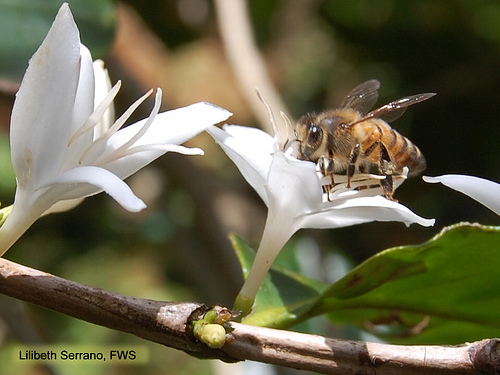
Experts are sounding the death knell for our beloved coffee bean, and they’re blaming climate change. You can read some of the predictions in a March 27 article called “Buzzkill? How Climate Change Could Eventually End Coffee,” by Jason Koebler at US News and World Report. Basically, Koebler’s article makes a case that coffee is in imminent danger for three reasons:
1. Arabica coffee plants can only grow in a certain temperature range. Countries that are major coffee exporters now might no longer be able to sustain the delicate crop because of higher temperatures. When that happens, coffee farms will be pushed north:
Within a couple decades, researchers fear, coffee might have to be grown in the Northern Hemisphere, putting countries that rely on the crop in an economically tight spot. “By 2050, Nicaragua will hardly be a coffee producer anymore,” says Tim Schilling, executive director of the World Coffee Research Center. “It’s possible that instead of sourcing coffee from Guatemala, you’ll be doing it from Texas or the south of France.”
A new boom in coffee farming might be great for Texas or France — but at what cost? The economic decimation of Guatemala and other coffee-producing nations?
2. High temperatures and high rainfall are perfect conditions for a deadly fungus that causes coffee leaf rust. This fungus has the potential to wipe out Arabica coffee trees. In February, Guatemala declared a state of emergency because the disease is decimating their top export, and other countries, including Mexico, are also feeling the pain. Koebler links the rise of coffee rust to climate change:
For decades, developing countries grew coffee and shipped it off to the developed world. The climate in coffee producing countries such as Costa Rica, Colombia, Ethiopia and Vietnam was relatively stable, and coffee hauls were generally predictable. That has changed recently as rust has spread and more variable temperatures have reduced coffee hauls.
In response to this assertion, one of the commenters at U.S. News and World Report posted the Internet-comment version of an eyeroll: “Frankly your assertion that this fungus spreads because of global warming without a shred of supporting evidence is unscientific,” he wrote. That might be a fair argument since the coffee rust fungus dates to Kenya in the 1860s, and other articles about coffee rust don’t even mention climate change as a mitigating factor. But it seems certain that coffee rust thrives in higher temperatures.
3. Coffee hasn’t been researched as much as other crops, and farmers don’t necessarily have access to strategies for protecting coffee plants.
Coffee is an under-researched area of agriculture, according to Koebler’s article:
Gaitan concurs: “Unfortunately for other countries, there’s not a lot of research on coffee. … For those facing the future without good scientific support, it’s going to be hard.”
Fungicides cost a lot, and although scientists have begun to engineer hybrid coffee plants that resist the coffee rust fungus, it’s not a cure-all. Some farmers don’t trust these new fungus-resistant varieties, fearing that the coffee won’t taste as good. Plus, how do you convince a farmer to spend years replacing coffee plants that he or she depends on to make a living?
Koebler writes that a solution would also require a wide-reaching effort to bring solutions to each individual farmer:
Creating a rust-resistant plant is one thing; getting it to Colombia’s half million farmers—whose average farm is just 4 acres—and convincing them to use it is another.
An article in the Guardian poses a similar problem when discussing coffee rust in Mexico:
For three days in February, 150 experts from Mexico and Central America gathered in the town of Tapachula to exchange know-how and advice. But “how are we to train thousands of small coffee-growers who are widely dispersed, and can’t afford to buy fertilisers or replace their old bushes?” Trampe asks.
There are organizations working on these problems — Koebler cites the World Coffee Research Center, which is funded by coffee companies in the U.S. Among other examples, a French research organization called CIRAD is also researching coffee rust and training coffee producers about potential solutions.
Let’s take a step back. This U.S. News and World Report article is one of many to raise the alarm about one product to try to get sympathetic readers to care about the broader climate change issues at stake. That’s a decent strategy, and it might work.
But even if climate change were not a factor, coffee farmers would still be facing the scourges of coffee rust, lack of access to crop research, lack of access to fertilizers and fungicides, and a host of other issues. These are solvable problems. Maybe it’s time that a coffee-loving world began to focus on coffee research and development and better environmental practices — not to save the world from climate change, not even because we selfishly want to save our morning Starbucks, but because we ought to care about the very real challenges facing people on the coffee farms we so often ignore.
Leaf rust image from rooracer on Flickr Creative Commons, Attribution-Noncommercial-NoDerivs license.


